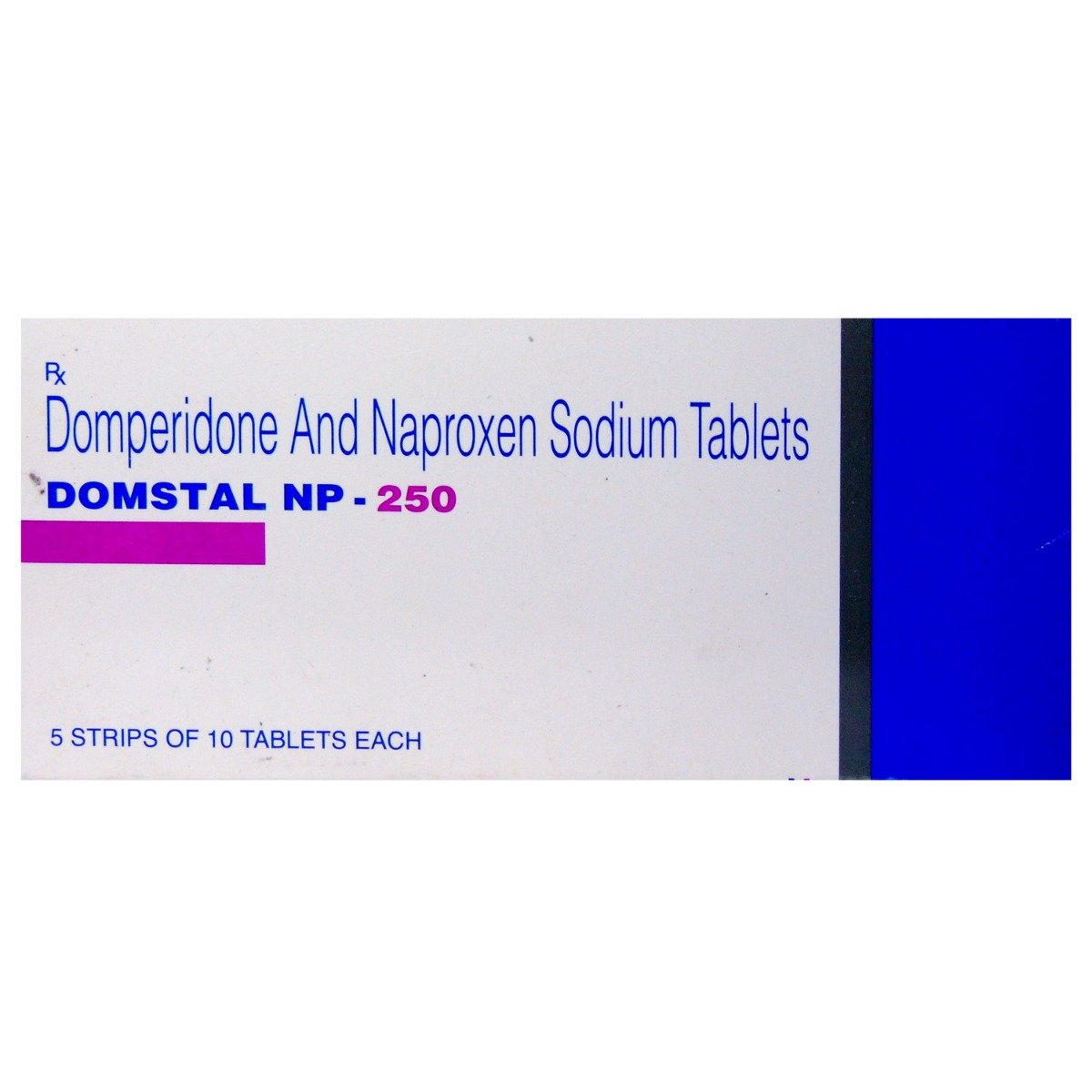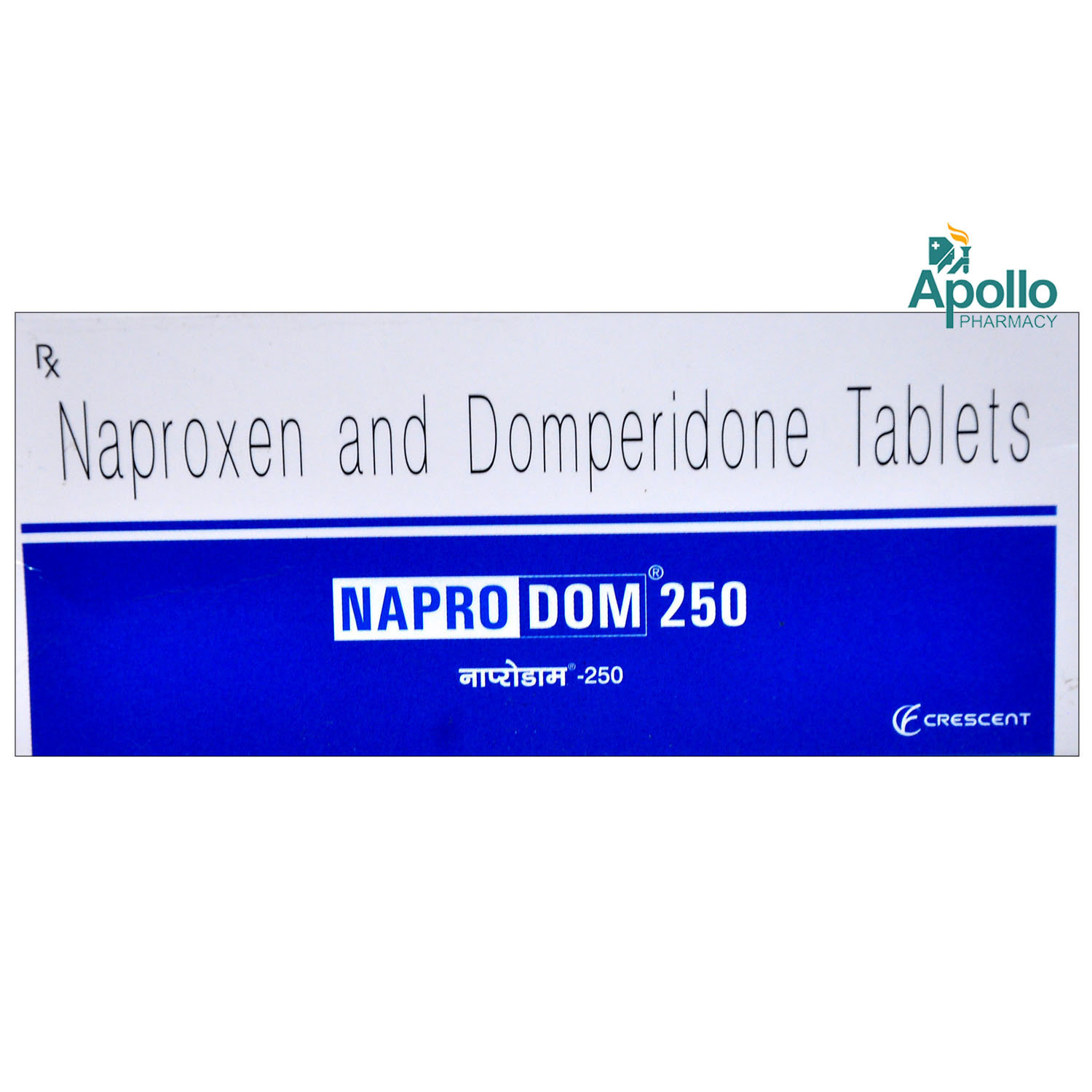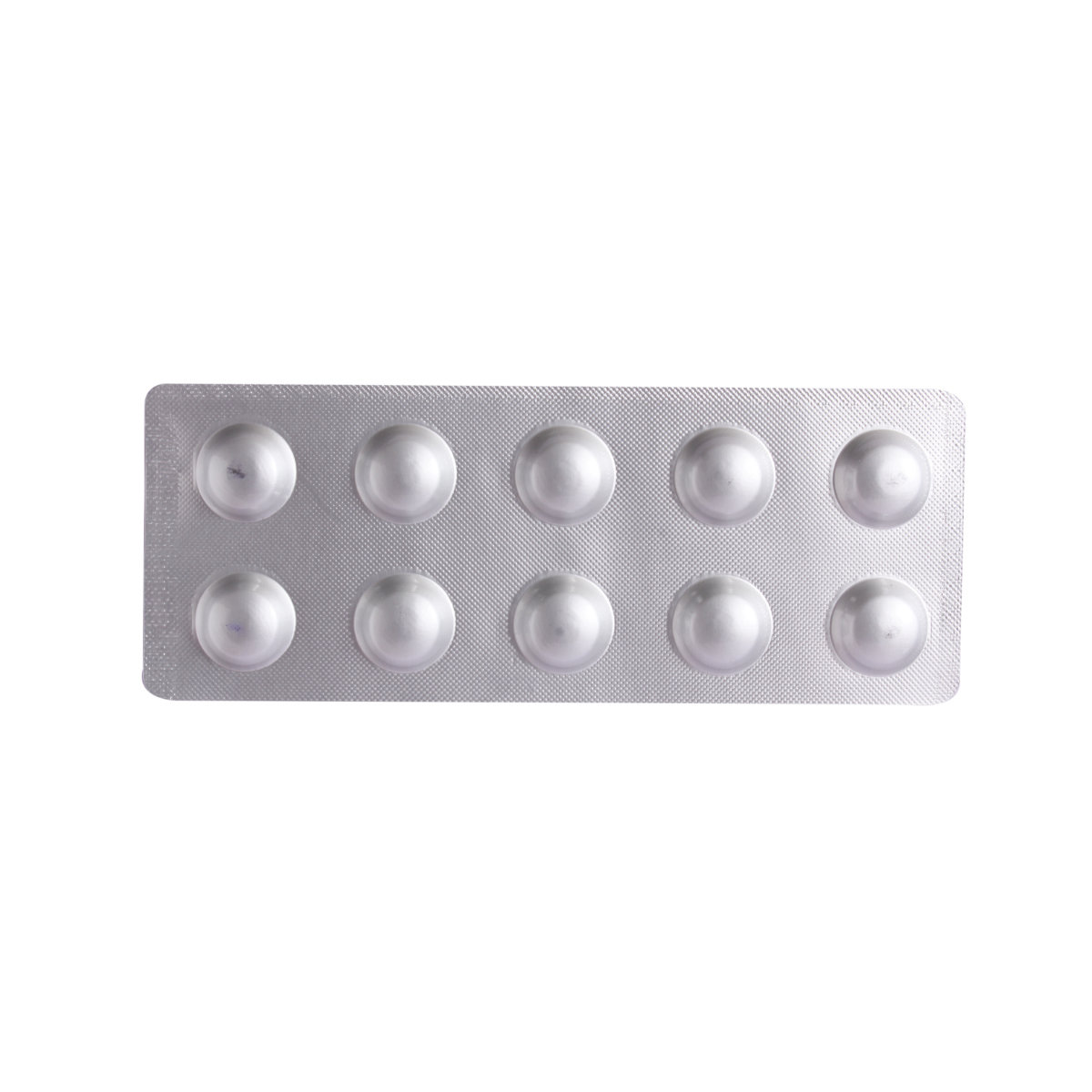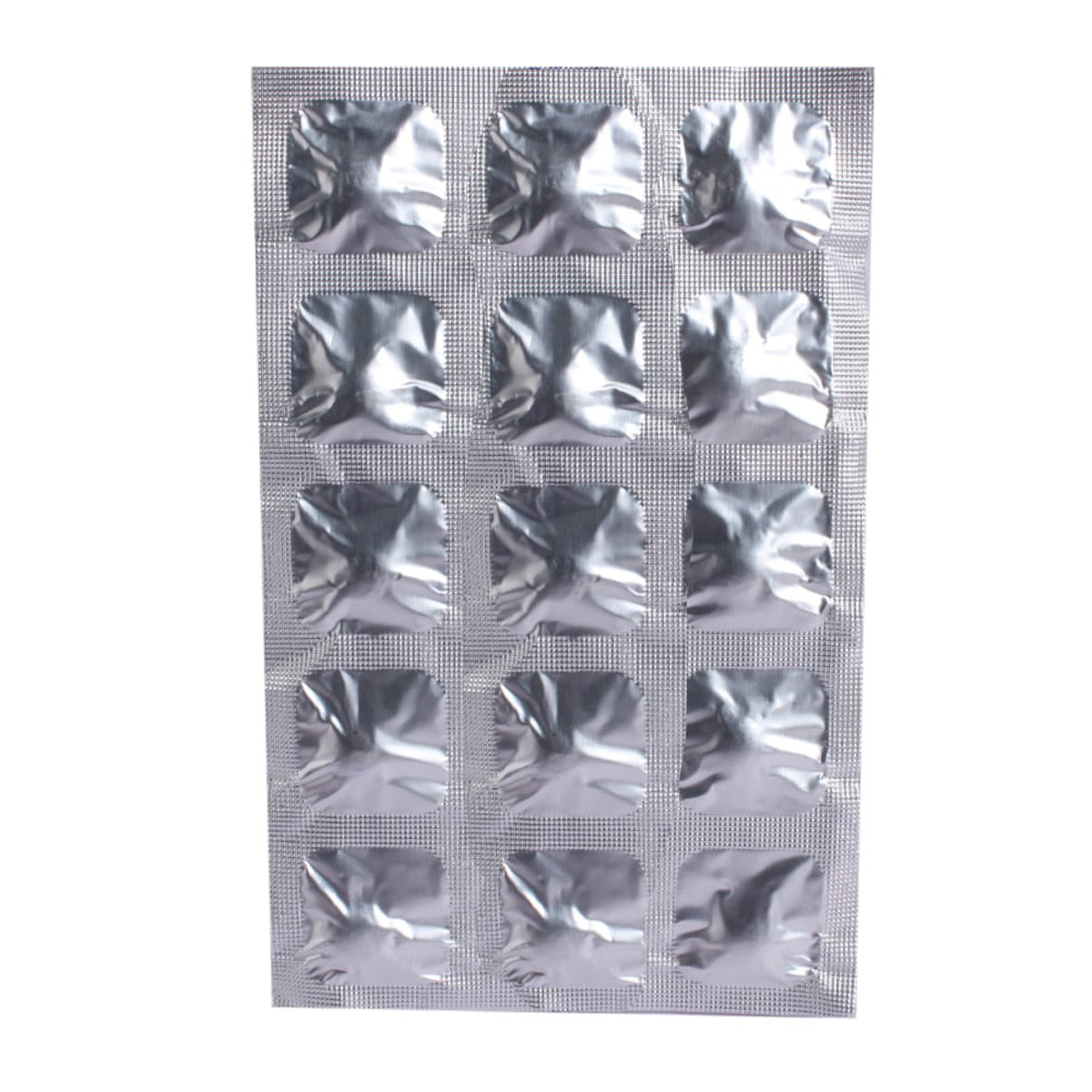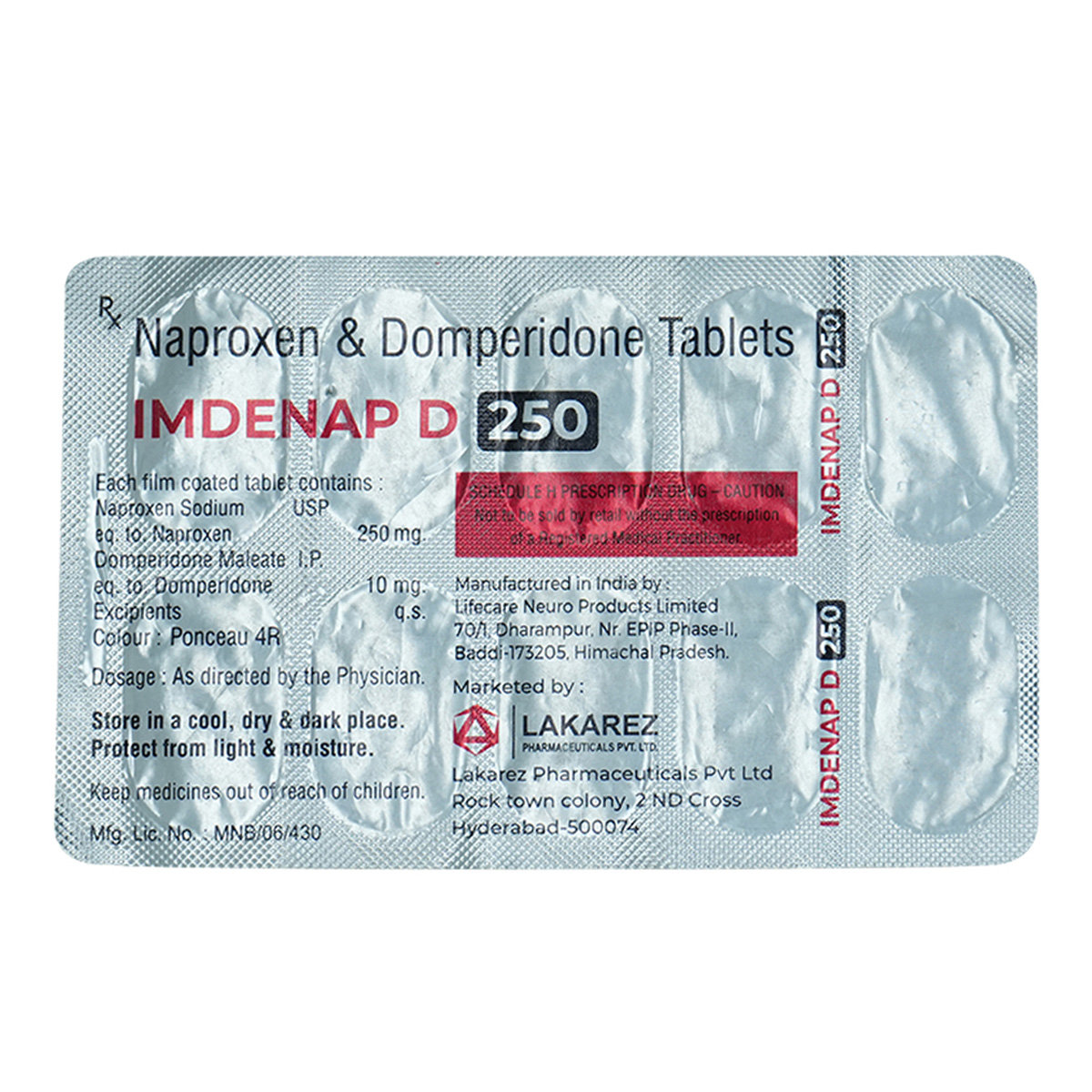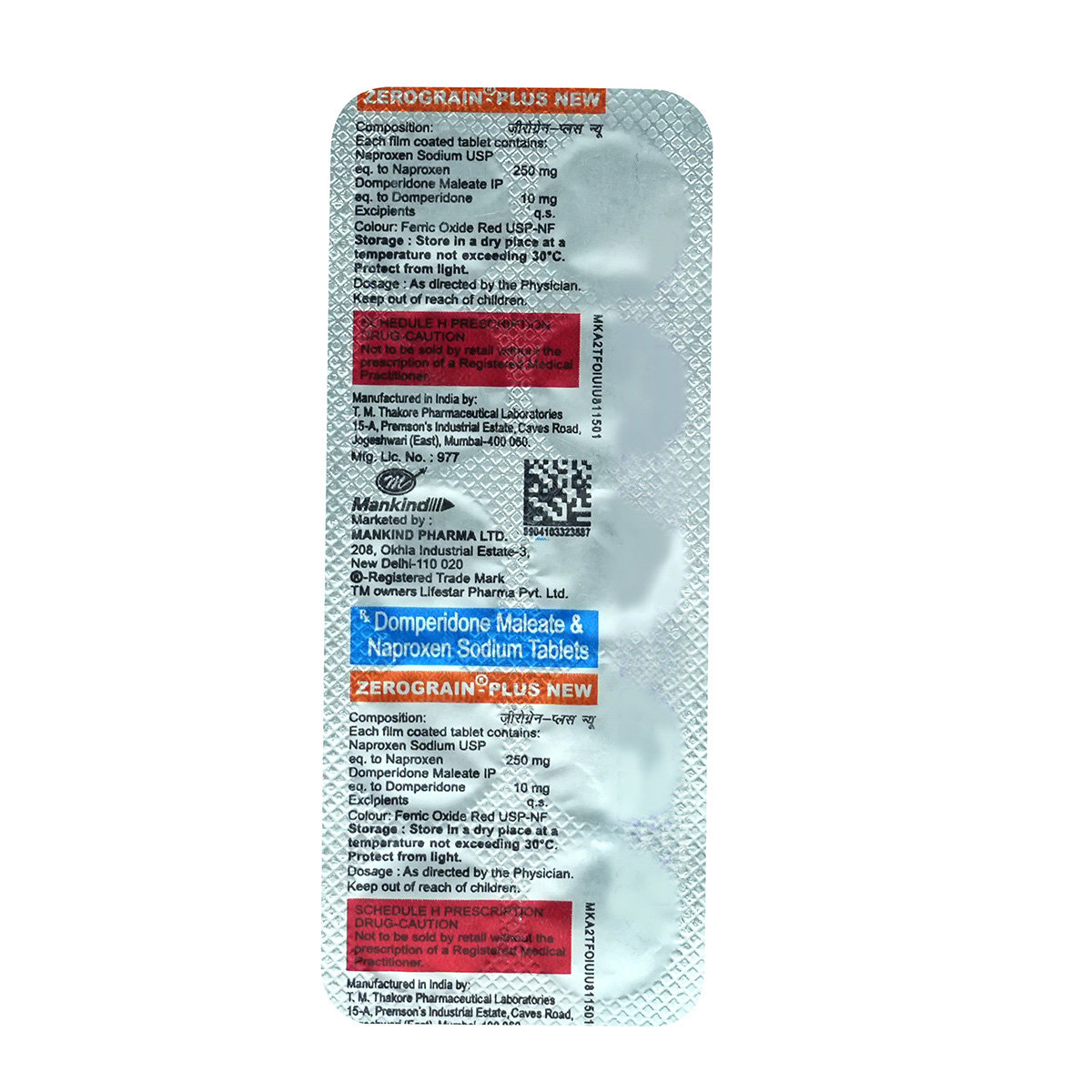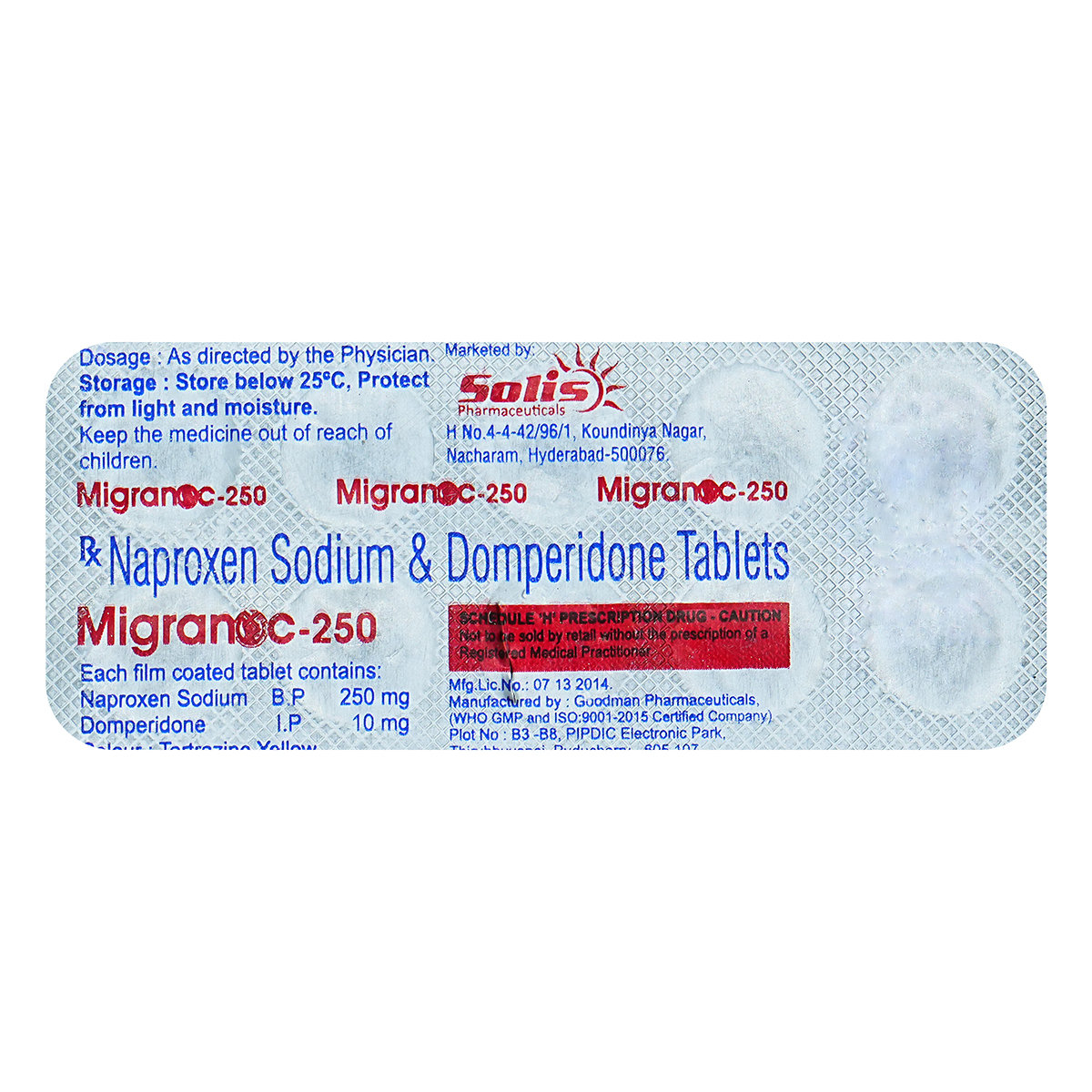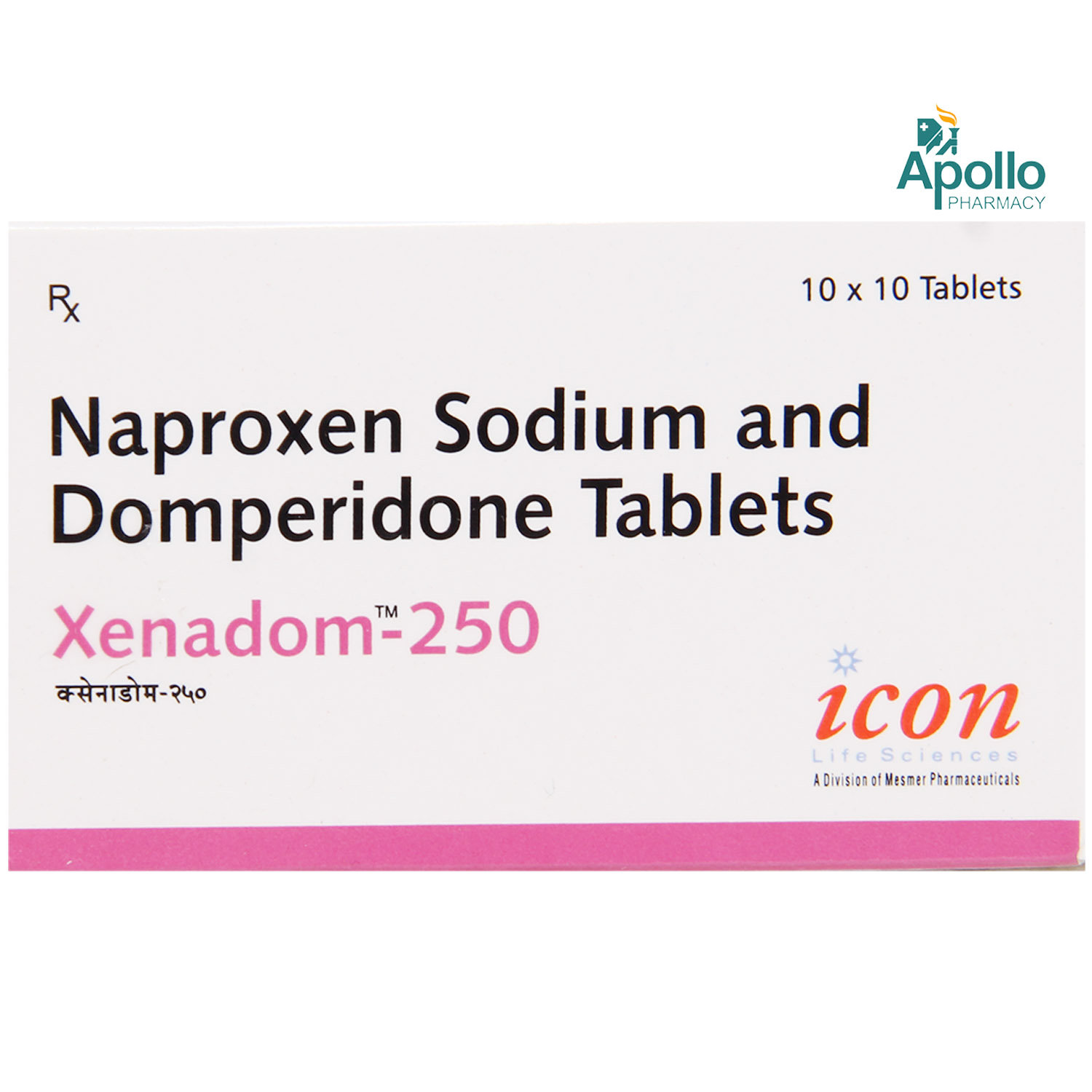Napra D 250 Tablet

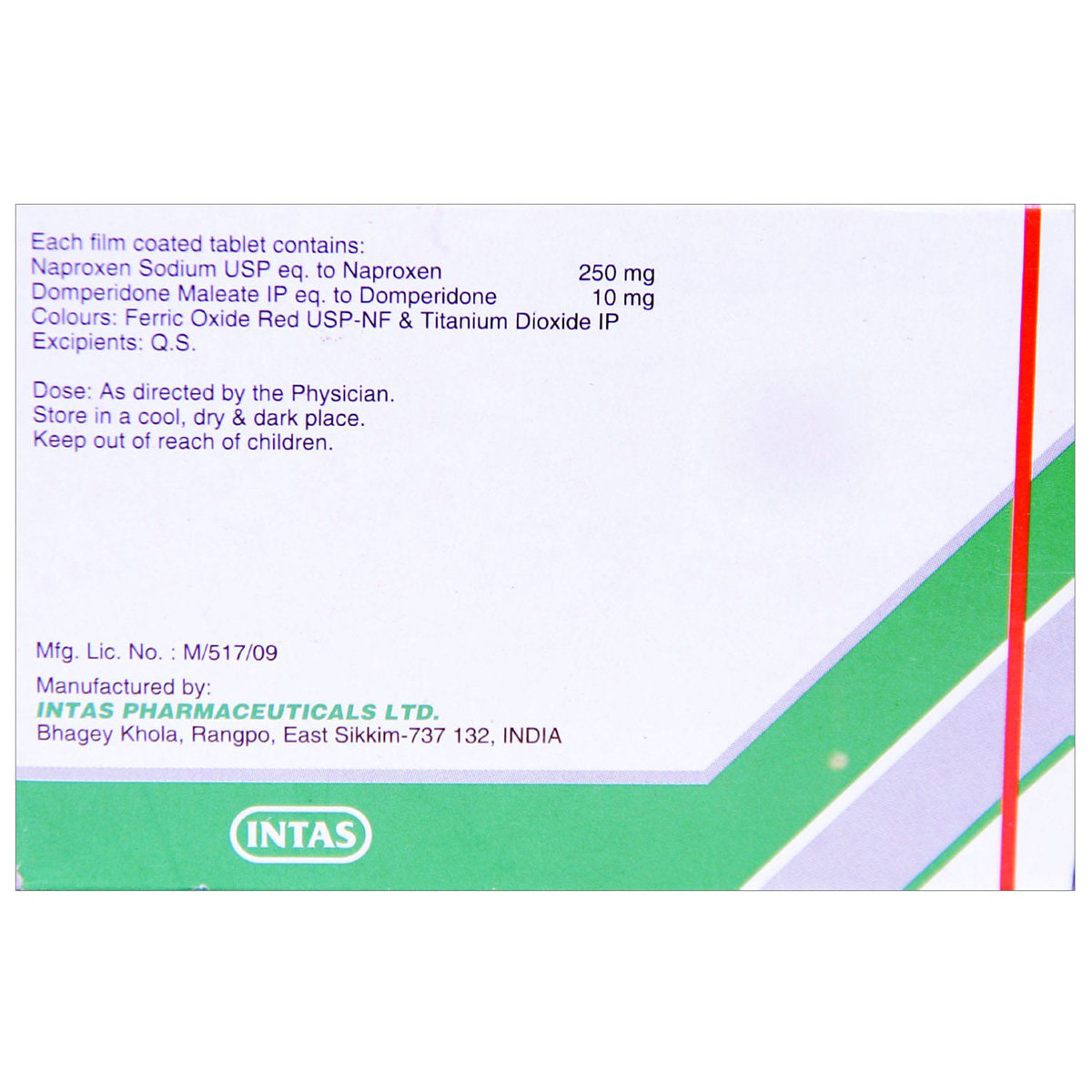
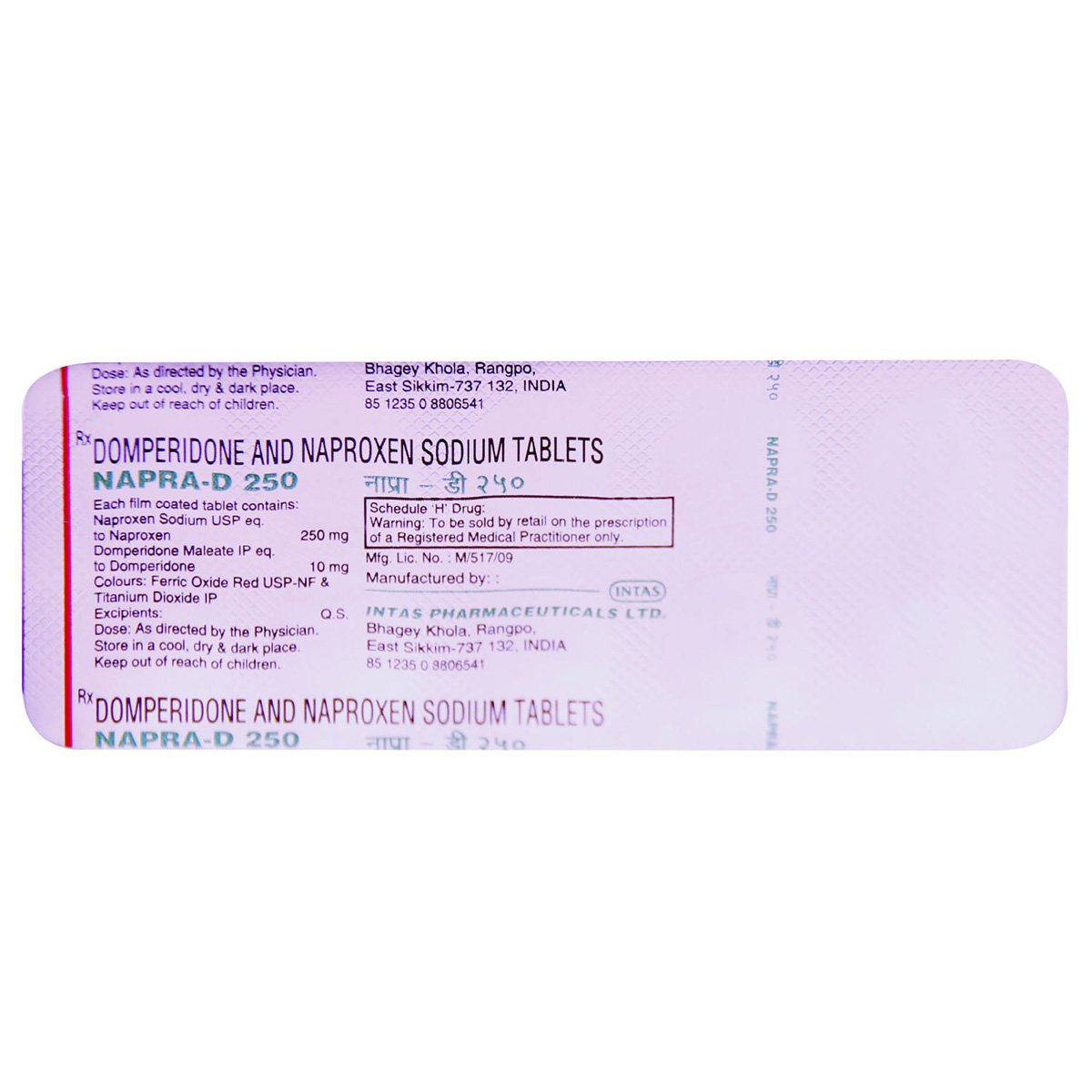
MRP ₹87.5
(Inclusive of all Taxes)
₹13.1 Cashback (15%)
know your delivery time
Provide Delivery Location
Composition :
Manufacturer/Marketer :
Consume Type :
Expires on or after :
Return Policy :

Secure Payment

Trusted by 8 Crore Indians

Genuine Products
Therapeutic Class
Country of origin
Manufacturer/Marketer address
Disclaimer
Alcohol
Safe if prescribed
It is advised not to take alcohol as Napra D 250 Tablet can cause dizziness or drowsiness.
Pregnancy
Consult your doctor
Napra D 250 Tablet should be used in pregnant women only if clinically needed, and the benefits outweigh the risks.
Breast Feeding
Consult your doctor
Napra D 250 Tablet should be used in breastfeeding mothers only if the benefits outweigh the risks.
Driving
Safe if prescribed
It is unsafe to drive after taking Napra D 250 Tablet as it impacts your ability to drive or operate machinery.
Liver
Consult your doctor
Limited information was available for the use of Napra D 250 Tablet in patients suffering from liver impairment. Please consult your doctor if you have any concerns regarding using Napra D 250 Tablet in patients with liver impairment. Your doctor will prescribe only if the benefits outweigh the risks.
Kidney
Consult your doctor
Limited information was available for the use of Napra D 250 Tablet in patients suffering from kidney impairment. Please consult your doctor if you have any concerns regarding using Napra D 250 Tablet in patients with kidney impairment. Your doctor will prescribe only if the benefits outweigh the risks.
Children
Safe if prescribed
Napra D 250 Tablet should be used in children below 12 years of age only when prescribed by a child specialist.
Product Substitutes
About Napra D 250 Tablet
Napra D 250 Tablet belongs to the group of medications called analgesics. It treats migraine headaches. Besides this, it can also be used to reduce pain in rheumatoid arthritis, gout and dysmenorrhea (menstrual pain). Migraine is a condition characterized by intense headaches. Pain is a symptom that occurs due to various underlying conditions.
Napra D 250 Tablet is a combination of two drugs: Naproxen and Domperidone. Naproxen works by blocking the action of the cyclo-oxygenase (COX) enzyme in the body that produces certain chemical substances such as prostaglandins that cause pain and swelling. Domperidone is an antiemetic agent which prevents nausea and vomiting symptoms by blocking certain receptors (like dopamine and serotonin) that stimulate the vomiting centre (chemoreceptor trigger zone – CTZ) located in the brain.
Take Napra D 250 Tablet as prescribed by your doctor. You are advised to take Napra D 250 Tablet for as long as your doctor has prescribed it for you based on your medical condition. Common side-effects of Napra D 250 Tablet are dryness of the mouth, abdominal pain, constipation, drowsiness, dizziness, visual disturbances, hearing problems and headache. Consult your doctor if you feel any discomfort.
Before taking the Napra D 250 Tablet , let your doctor know about all your allergic or hypersensitivity reactions to medicines or food. If you are pregnant or breastfeeding, please tell your doctor so that your doctor will weigh the benefits and any potential risks before prescribing it to you. Also, inform the doctor if you have a history of heart rhythm problems or ulcers due to pain killers. Patients with age above 65 years, pre-existing cardiac diseases such as heart failure, hypertension or stroke, gastrointestinal bleeding (due to pain killers), gastric ulcers, respiratory diseases such as asthma, liver diseases, kidney diseases or bleeding disorders should use Napra D 250 Tablet only when prescribed by a doctor.
Uses of Napra D 250 Tablet
Medicinal Benefits Mweb
Key Benefits
Napra D 250 Tablet is a combination of naproxen and domperidone. Naproxen is an anti-inflammatory (reduce inflammation) and analgesic (reduce pain) agent. It inhibits the synthesis of prostaglandins, which are inflammatory mediators, thereby reducing pain and inflammation. Domperidone acts by enhancing gastric peristalsis (movements) to empty stomach. Easy movement of food through the stomach helps in relieving nausea and vomiting. It blocks the dopamine receptors present at the chemoreceptor trigger zone (responsible for regulating nausea and vomiting).
Directions for Use
Side Effects of Napra D 250 Tablet
- Abdominal pain
- Constipation
- Indigestion
- Flatulence
- Dry mouth
- Glossitis (inflammation of the tongue)
- Diarrhoea
- Drowsiness
- Dizziness
- Headache
- Vision problems
- Hearing problems
Drug Warnings
Inform your doctor if you are taking any of the anticoagulants (warfarin), other NSAIDs (ibuprofen, ketorolac), corticosteroids (prednisolone), antidepressants (citalopram, fluoxetine, paroxetine, duloxetine, venlafaxine), or any other dietary or herbal supplements. Long-term use of nonsteroidal anti-inflammatory drugs (NSAIDs) (other than aspirin) such as naproxen may increase the risk of heart attack or stroke and stomach ulcers. The risk of developing ulcers is higher if you have a history of ulcers, have bleeding disorders, older in age, alcoholic or have multiple diseases. The risk of having a heart attack increases if you smoke, or you or your family has a history of heart failure, stroke, or hypertension. Call for medical help immediately, if you experience chest pain, shortness of breath, blood in the stool or dark stools, heartburn, or any other abnormal signs.
Drug-Drug Interactions
Drug-Drug Interactions
Login/Sign Up
Coadministration of Ketorolac with Napra D 250 Tablet can increase the risk or severity of gastric bleeding and ulceration.
How to manage the interaction:
Taking Ketorolac with Napra D 250 Tablet together is generally avoided as it can possibly result in an interaction, it can be taken if your doctor has advised it. However, if you notice any unusual bleeding or bruising, other signs of bleeding, dizziness, lightheadedness, red or black tarry stools, coughing up or vomiting blood, severe headache, and weakness, you should contact your doctor immediately. Do not stop using any medications without first talking to your doctor.
Co-administration of Napra D 250 Tablet with Meloxicam can increase the risk or severity of gastric bleeding, ulceration, and rarely, perforation leading to serious blood loss.
How to manage the interaction:
Taking Meloxicam with Napra D 250 Tablet is not advised as it can possibly result in an interaction, it can be taken if your doctor has advised it. You should seek immediate medical attention if you experience any unusual bleeding or bruising or have other signs and symptoms of bleeding such as dizziness; lightheadedness; red or black, tarry stools; coughing up or vomiting fresh or dried blood that looks like coffee grounds; severe headache; and weakness.
Taking cidofovir with Napra D 250 Tablet may increase the risk or severity of kidney problems
How to manage the interaction:
Taking Napra D 250 Tablet with Cidofovir is generally avoided as it can possibly result in an interaction. You should seek immediate medical attention if you develop signs and symptoms such as nausea, vomiting, loss of hunger, increased or decreased urination, sudden weight gain or weight loss, fluid retention, swelling, shortness of breath, bone pain, muscle cramps, tiredness, weakness, dizziness, confusion, and irregular heart rhythm.
Co-administration of Domeperidone and Bepridil can increase the risk of irregular heart rhythm.
How to manage the interaction:
Although taking Napra D 250 Tablet and Bepridil together can cause an interaction, it can be taken if your doctor has suggested it. If you experience lightheadedness, tiredness, increased heart rate, consult a doctor. Do not discontinue any medications without consulting a doctor.
Combining Mizolastine with Napra D 250 Tablet can increase the risk or severity of irregular heart rhythms.
How to manage the interaction:
Although taking Napra D 250 Tablet and Mizolastine together can cause an interaction, it can be taken if your doctor has suggested it. However, if you experience sudden dizziness, lightheadedness, fainting, shortness of breath, chest pain or tightness, rapid heartbeat, contact a doctor immediately. Do not discontinue any medications without consulting a doctor.
Coadministration of Napra D 250 Tablet with Cisapride can increase the blood levels of Napra D 250 Tablet.
How to manage the interaction:
There may be a possibility of interaction between Napra D 250 Tablet and Cisapride, but it can be taken if prescribed by a doctor. In case you experience any side effects like swelling of the ankles or feet, unusual tiredness, redness, changes in menstrual ability, contact a doctor. It is recommended to do this to ensure your heart stays healthy. Do not stop using any medications without talking to a doctor.
Coadministration of Napra D 250 Tablet with Halofantrine can Increase the risk of irregular heart rhythm.
How to manage the interaction:
Although taking Napra D 250 Tablet and Halofantrine together can cause an interaction, it can be taken if your doctor has suggested it. If you experience lightheadedness, tiredness, increased heart rate, consult a doctor. Do not discontinue any medications without consulting a doctor.
Coadministration of Napra D 250 Tablet with Nefazodone can increase the blood levels of Napra D 250 Tablet.
How to manage the interaction:
There may be a possibility of interaction between Napra D 250 Tablet and Nefazodone, but it can be taken if prescribed by a doctor. In case you experience any side effects like swelling of the ankles or feet, unusual tiredness, redness, changes in menstrual ability, contact a doctor. It is recommended to do this to ensure your heart stays healthy. Do not stop using any medications without talking to a doctor.
Coadministration of Napra D 250 Tablet with Toremifene can Increase the risk of irregular heart rhythm.
How to manage the interaction:
Although taking Napra D 250 Tablet and Toremifene together can cause an interaction, it can be taken if your doctor has suggested it. If you experience lightheadedness, tiredness, increased heart rate, consult a doctor. Do not discontinue any medications without consulting a doctor.
Coadministration of Napra D 250 Tablet with Ketoconazole can Increase the risk of irregular heart rhythm.
How to manage the interaction:
Although taking Napra D 250 Tablet and Ketoconazole together can cause an interaction, it can be taken if a doctor has suggested it. If you experience lightheadedness, tiredness, increased heart rate, consult a doctor. Do not discontinue any medications without consulting a doctor.
Drug-Food Interactions
Drug-Food Interactions
Login/Sign Up
Drug-Diseases Interactions
Drug-Diseases Interactions
Login/Sign Up
Drug-Drug Interactions Checker List
- WARFARIN
- KETOROLAC
- PREDNISOLONE
- RAMIPRIL
- AMLODIPINE
- AMIKACIN
- ATORVASTATIN
- CITALOPRAM
- FLUOXETINE
Habit Forming
Special Advise
- Your doctor may monitor liver function and kidney function if you are taking Napra D 250 Tablet for long-term.
- Taking meals at the same time every day and sufficient sleep might help in avoiding migraine attacks. You are recommended to avoid loud music, noisy place, extreme temperatures and bright light. Also, avoid consumption of chocolates, cheese, processed food, smoking and alcohol.
Diet & Lifestyle Advise
- Drink plenty of fluids to avoid gastrointestinal problems.
- Avoid triggers that can increase your migraine headache.
- Take enough rest.
- Acupuncture, massage and physical therapy may also be helpful.
- De-stress yourself by meditating, reading books, taking a warm bubble bath or listen to soothing music.
- Avoid smoking and alcohol consumption.
- Performing yoga may also help in improving joint flexibility and pain management.
- Get adequate sleep as resting the muscles can help in reducing inflammation and swelling.
All Substitutes & Brand Comparisons
RX
Minado 250 Tablet 10's
Tas Med India Pvt Ltd
₹52.5
(₹4.73 per unit)
39% CHEAPERRX
Domstal NP-250 mg Tablet 10's
Torrent Pharmaceuticals Ltd
₹66.5
(₹5.99 per unit)
23% CHEAPERRX
Out of StockCoxdom-250 Tablet 10's
Ficus Life Sciences Pvt Ltd
₹70
(₹6.3 per unit)
20% CHEAPER

Have a query?
Buy best C.n.s Drugs products by
Intas Pharmaceuticals Ltd
Sun Pharmaceutical Industries Ltd
Torrent Pharmaceuticals Ltd
Alkem Laboratories Ltd
Abbott India Ltd
Cipla Ltd
Alteus Biogenics Pvt Ltd
Micro Labs Ltd
Lupin Ltd
Ipca Laboratories Ltd
D D Pharmaceuticals Pvt Ltd
Icon Life Sciences
Mankind Pharma Pvt Ltd
Tripada Healthcare Pvt Ltd
Arinna Lifesciences Ltd
Linux Laboratories Pvt Ltd
East West Pharma India Pvt Ltd
La Renon Healthcare Pvt Ltd
Talent India Pvt Ltd
Tas Med India Pvt Ltd
Zydus Healthcare Ltd
Cnx Health Care Pvt Ltd
Eris Life Sciences Ltd
Leeford Healthcare Ltd
Emcure Pharmaceuticals Ltd
Macleods Pharmaceuticals Ltd
Sigmund Promedica
Aristo Pharmaceuticals Pvt Ltd
Dr Reddy's Laboratories Ltd
Troikaa Pharmaceuticals Ltd
Consern Pharma Ltd
Zydus Cadila
Shine Pharmaceuticals Ltd
Wockhardt Ltd
Ardent Life Sciences Pvt Ltd
Crescent Formulations Pvt Ltd
Theo Pharma Pvt Ltd
Reliance Formulation Pvt Ltd
Ikon Pharmaceuticals Pvt Ltd
Propel Healthcare
Neon Laboratories Ltd
Jagsam Pharma
Msn Laboratories Pvt Ltd
Morepen Laboratories Ltd
Pulse Pharmaceuticals
Sanofi India Ltd
Med Manor Organics Pvt Ltd
Hetero Healthcare Pvt Ltd
Novartis India Ltd
Crescent Therapeutics Ltd
Elder Pharmaceuticals Ltd
Solvate Laboratories Pvt Ltd
Akumentis Healthcare Ltd
Mova Pharmaceutical Pvt Ltd
Psyco Remedies Ltd
Tripada Lifecare Pvt Ltd
Ajanta Pharma Ltd
Cyrus Remedies Pvt Ltd
Medishri Healthcare Pvt Ltd
Cadila Healthcare Ltd
Glenmark Pharmaceuticals Ltd
Matteo Health Care Pvt Ltd
Hbc Life Sciences Pvt Ltd
Lyf Healthcare
Matias Healthcare Pvt Ltd
Mesmer Pharmaceuticals
Alembic Pharmaceuticals Ltd
Capital Pharma
Crescent Pharmaceuticals
Medopharm Pvt Ltd
Alniche Life Sciences Pvt Ltd
Kivi Labs Ltd
Talin Remedies Pvt Ltd
USV Pvt Ltd
Quince Lifesciences Pvt Ltd
Solis Pharmaceuticals
Infivis Life Care
Zuventus Healthcare Ltd
Cadila Pharmaceuticals Ltd
Pfizer Ltd
Wallace Pharmaceuticals Pvt Ltd
A N Pharmacia Laboratories Pvt Ltd
Blue Cross Laboratories Pvt Ltd
Jenburkt Pharmaceuticals Ltd
Lia Life Sciences Pvt Ltd
Mano Pharma
Medley Pharmaceuticals Ltd
Primus Remedies Pvt Ltd
FDC Ltd
Maneesh Pharmaceuticals Ltd
Apex Laboratories Pvt Ltd
Gagnant Healthcare Pvt Ltd
Ozone Pharmaceuticals Ltd
RPG Life Sciences Ltd
Strides Shasun Ltd
Unichem International
GlaxoSmithKline Pharmaceuticals Ltd
Kuresys Labs Pvt Ltd
LA Pharma
Trion Pharma India Llp


